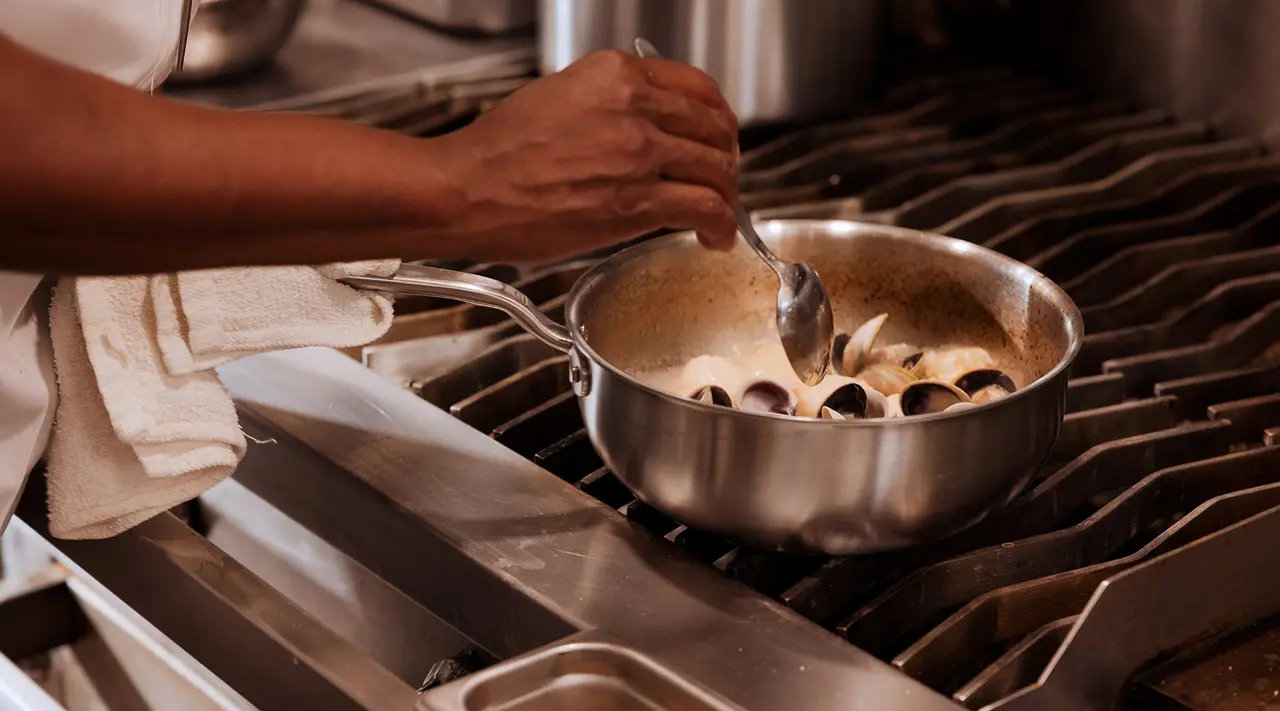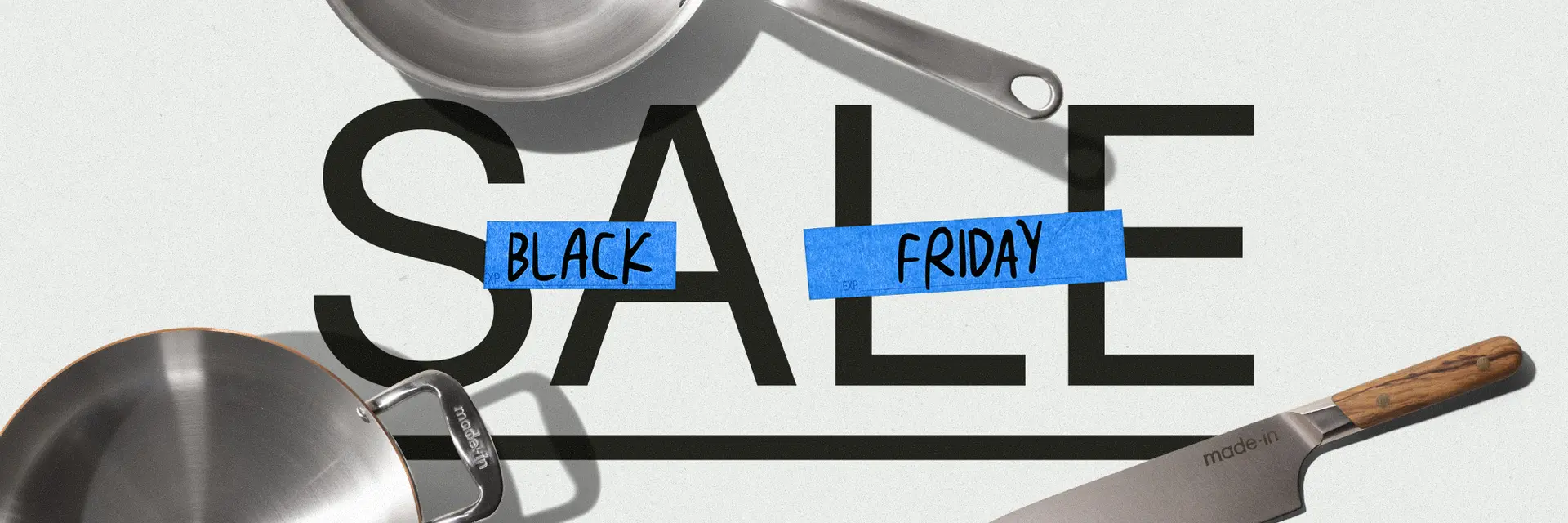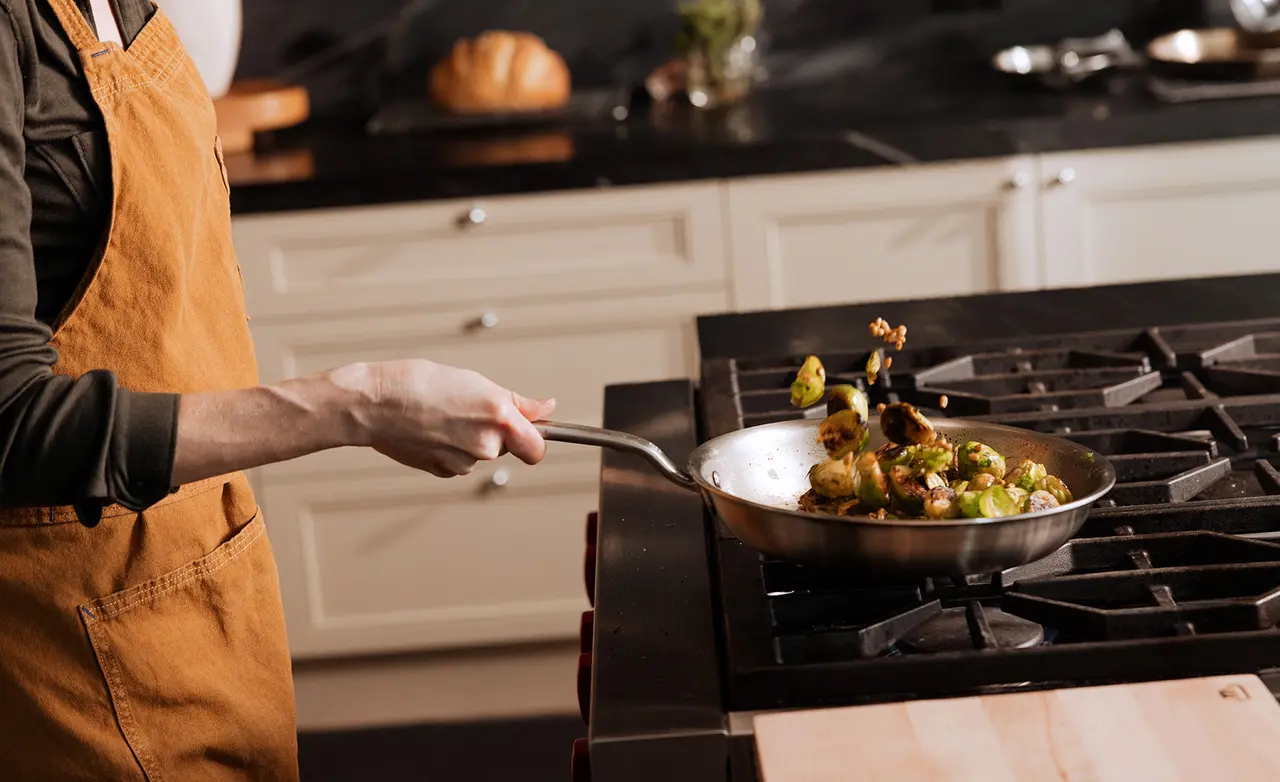When it comes to outfitting a kitchen, many people think they only need a few main pieces of cookware—one or two Frying Pans, a Saucepan, a Stock Pot, and maybe a Saute Pan. While these are the core components you’ll find in most cookware sets, the truth is that if you want to not only diversify but also enhance the way you cook, there are a few other pieces you may need.
One piece that we think that every kitchen needs is a Saucier. These may look similar to a Saucepan, but have varied uses. Here, we’ll take you through what a Saucier is, why you need one, and how to shop for one like a professional chef.
What Is a Saucier?
A Saucier, named after the position on the line in professional kitchens that handles sauces, is a short, stout saucepan with a rounded bottom and sloped sides. Often described as a hybrid of a sauce pot or pan and Saute Pan, it’s designed for sauces and other liquid-based dishes. This is in part because there are no hard corners or edges for liquids to get trapped and burnt in. Their unique shape makes stirring and whisking easy, resulting in a smooth, well-blended sauce with no burnt parts.
Saucier vs. SaucepanBecause a Saucier is a type of Saucepan, determining the differences between the two can seem difficult. The main difference between a Saucier and a Saucepan is its shape—a Saucier is short with curved sides and a rounded bottom, while a Saucepan has straight walls and a flat bottom.
They’re both used to create liquid-based dishes, and we recommend having both on hand. A Saucier is best for saucy dishes that involve constant whisking or stirring, like risotto, while a Saucepan excels at distributing heat throughout small batches of soup or stews.
What Is a Saucier Used For?
A Saucier has many different uses, though the one it's most renowned for is sauces. The shape of the Saucier is perfectly designed for anything, from pasta sauce to broth, as its shape is uniquely suited for stirring or whisking. It’s also excellent for finishing pasta in sauce with its curved walls ensuring that no stray noodles get stuck in the corner. Plus, the rounded bottom helps the sauce and pasta thoroughly mix together.
In addition to these, we recommend the Saucier for recipes that involve constant attention, like jam or pastry cream. Check out our guide to the best Saucier uses for a full rundown of all the different uses for this versatile pot.
How to Shop for the Best Saucier
Now that you know what a Saucier is and what it can be used for, you can assess which Saucier is right for you. We offer four different sizes and two different materials. The best version for you largely depends on your style and scale of cooking.
1. Think About Its UsesWhen shopping for a Saucier, consider how you’ll be using it and what needs it will be filling in your kitchen—this can help inform what material and size to get. For instance, if you cook up large batches of jam for family and friends, then a 5QT Copper Saucier would be perfect for you. If you live alone and enjoy creating single-serve sauces, then we recommend opting for our 2QT Stainless Clad Saucier.
2. Consider the MaterialSauciers can come in a variety of materials, ranging from aluminum to copper. Generally the higher quality the material, the longer your Saucier will last, which is why we recommend either a Copper or Stainless Steel Saucier. Both of these materials are high-quality, offer impressive temperature control, and make a beautiful (and useful) addition to your stovetop.
Copper is renowned for its heat conductivity and aesthetic appeal, so we crafted a 5QT Saucier out of a copper exterior and Stainless Steel interior to provide chefs with a pan that can handle anything from ravioli to caramel sauce. This material that has stood the test of time makes a huge difference in heat control and cooking experience, resulting in more delicious meals.
Meanwhile, Stainless Clad is our tried-and-true construction material that put us on the map. Our 18/10 Stainless Clad is non-reactive, compatible on every cooking surface (including induction), oven safe, and features a 5-ply construction around an aluminum core. This ensures completely even heat distribution with no hot spots, so your food is guaranteed to cook evenly and thoroughly, whether you’re searing a steak or combining pasta and sauce.
3. Find the Right SizeJust like materials, Sauciers come in a wide variety of sizes, generally ranging from 2 QT (smallest) to 5 QTs or larger. Like other cooking tools, finding the right size for you depends on your lifestyle and cooking preferences. If you live alone and regularly cook for one, then a smaller size is right for you—whereas if you live with family or a partner and cook large quantities of food, a bigger Saucier would be your best bet.
We offer 2 QT, 3 QT, and 5 QT options. At a glance, 2 QTs can be used for single servings of sauces like chocolate ganache, or for toasting spices. Our 3 QT can handle 2–3 servings of food, and is often used by professional chefs for finishing pasta in sauce on the line. Our 5 QT Saucier can be used for large quantities of sauce or even to sear a large cut of meat. Since this size is our largest and can become quite heavy with food in the pan, we added a side handle to make transport easier. Check out our Saucier sizes guide for the major differences between sizes and how to choose the right one for you.
Ready to Shop?
These versatile pans have proved their worth in professional kitchens, so it’s now time to add it to yours and see why we believe no kitchen is complete without a Saucier. From sweet and savory sauces to searing, these pans can handle anything you need them for and then some. All you need to do is decide what you’ll cook next.
























